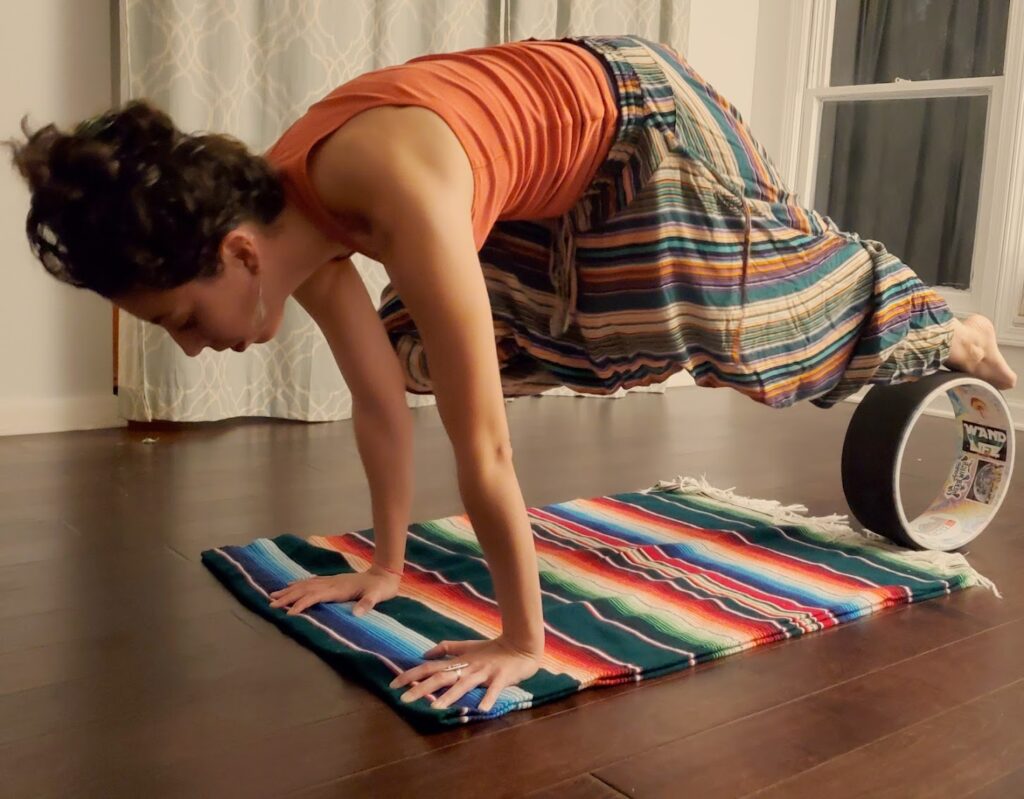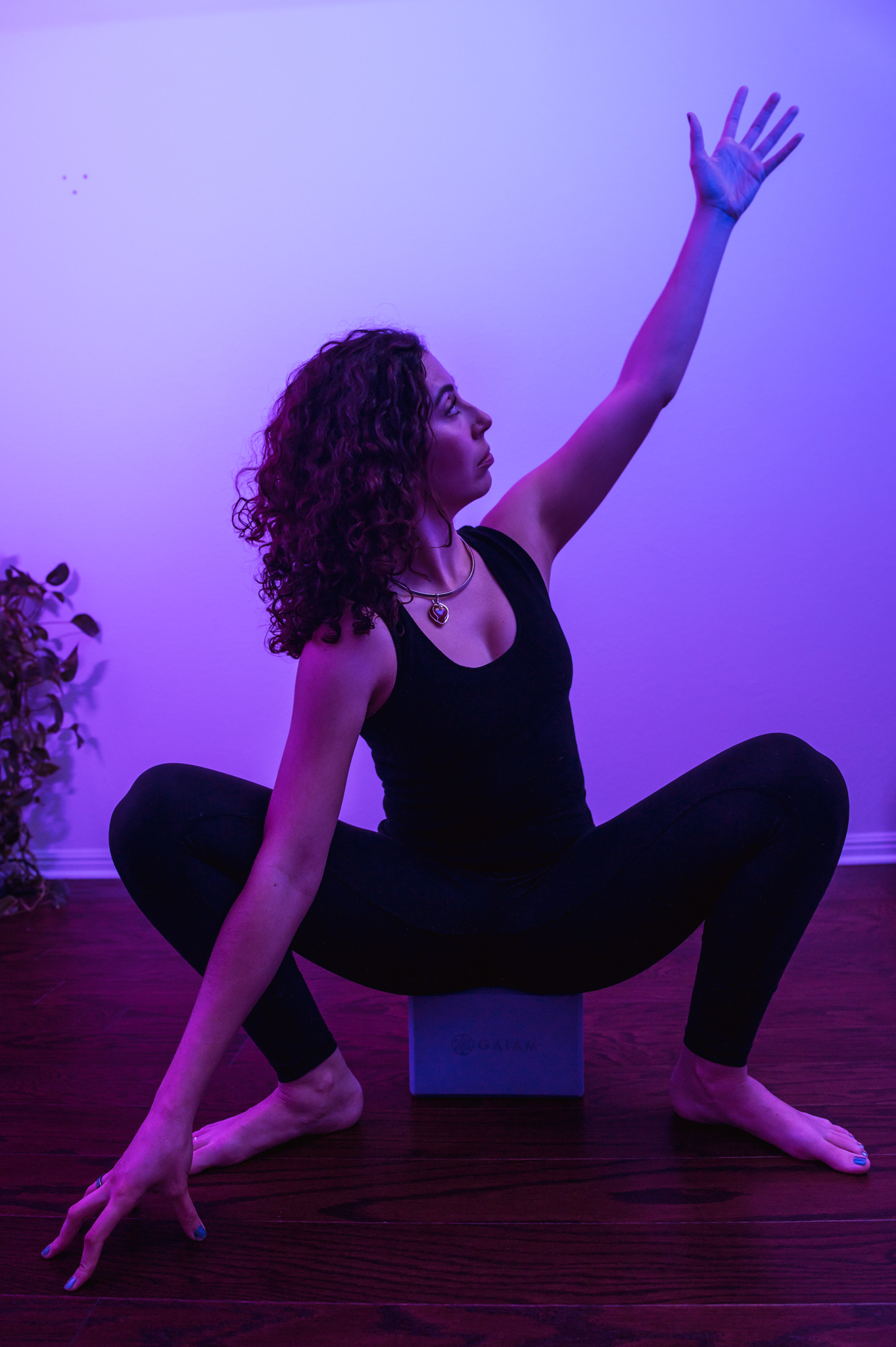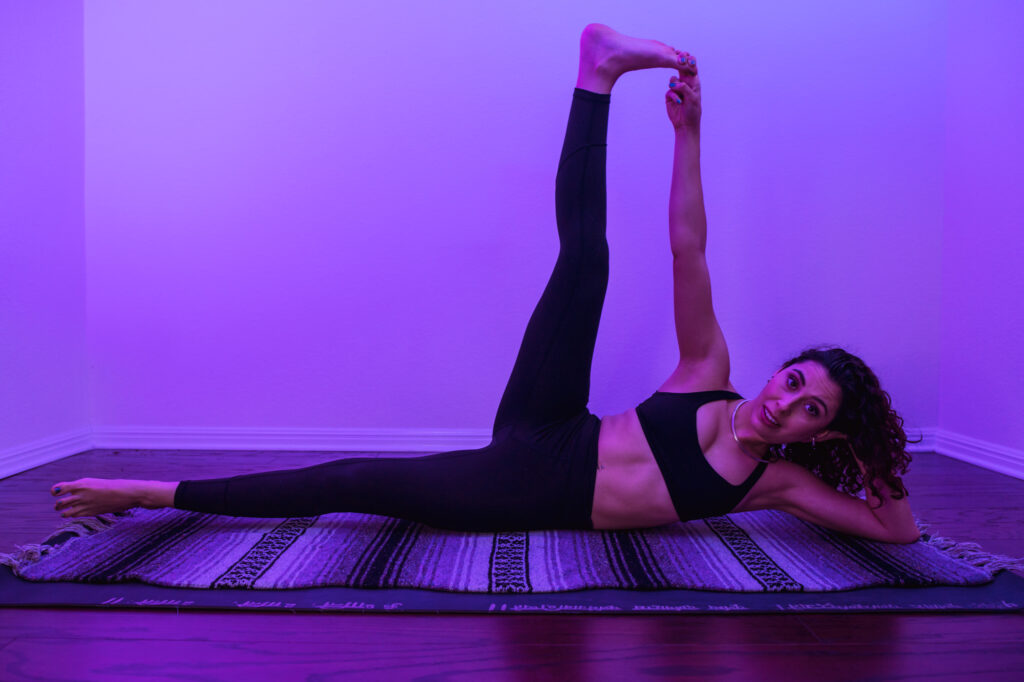What are Modifications?
Modifications are variations of yoga poses or layers within them that can be adapted to suit the needs and abilities of different practitioners. They can be used to make poses more accessible, safer, or more challenging depending on the individual’s requirements. Some common reasons for modifications include injury, physical limitations, bio-mechanical patterns, excessive flexibility or tightness, and varying levels of strength.
Yoga props are valuable tools that can support practitioners in accessing the benefits of modified yoga poses. Unfortunately, many new students inaccurately view the use of yoga props and/or modifications as a sign of weakness. In reality, incorporating props and personal modifications into one’s practice is the mark of a more advanced practice with deeper self-awareness. The greatest testimony to propping and modifying is the fact that B.K.S. Iyengar, commonly known as the father of modern yoga, used props extensively in his personal practice.

In essence, yoga modifications and props are not crutches or signs of inadequacy; rather, they are tools for self-expression, self-discovery, and self-care. By embracing modifications with props, practitioners honor their bodies’ wisdom and cultivate a compassionate and sustainable approach to yoga that extends far beyond the mat.
What are Contraindications?
Yoga contraindication is a vitally important concept that refers to specific conditions, situations, or health concerns in which certain yoga poses, breathing techniques, or meditation practices should be avoided or approached with caution. Practitioners may modify yoga poses by creating the same shapes in a different planes of space without inversion, weight-bearing in joints, or undue stress on the body. Considering contraindications, such as symptoms or medical diagnoses, that may be a reason for a person to not do a particular practice or procedure because it may be harmful can ultimately lead to better outcomes.
The growing trend of medical professionals recommending yoga as a complementary therapy underscores its recognized benefits for physical and mental health. However, a significant issue arises when Western yoga classes primarily focus on physical exertion without adequate consideration for contraindications and individual needs. These days, most group exercise classes including yoga are taught as if one size fits all (largely because of the yoga industrial complex, which certifies teachers with as little as 200 hours of training). While these classes may offer a challenging workout, they often lack the essential guidance and modifications necessary to ensure safety for all practitioners, especially those with pre-existing health conditions or injuries. This oversight can lead to potential risks, discomfort, or exacerbation of underlying health issues, undermining the holistic healing potential of yoga. It’s crucial for yoga instructors and studios to prioritize inclusivity, education on contraindications, and mindfulness in their teachings, thereby aligning with the true essence of yoga as a practice that fosters well-being on all levels.

Examples of Common Contraindications
Carpal Tunnel Syndrome (CTS): Compression of the median nerves traveling through the wrist at the carpal tunnel can cause neurological issues such as tingling, numbness, or radiating pain. Weight bearing in deep flexion such as plank, handstand, wheel, or even down dog can be contraindicated. In some instances yoga props such as blocks, blankets and chairs may assist the pose.
Glaucoma: Inversions increase pressure in eyes and should be avoided. Seated forward folds are a great substitution for standing ones where the hips are higher above the head.
Hypertension: Calming practices that soothe the heart rate are helpful whereas fiery, stress inducing practices that can elevate it are contraindicated for folks with high blood pressure. Most yang styles of yoga (ashtanga, power and vinyasa) are contraindicated. Inverted poses such as downward facing dog, bridge, or shoulder stand are not recommended.
Imbalanced Ear Fluid: Imbalanced ear fluid can create instability, falls, and loss of consciousness. Seated postures are recommended over standing ones.
Pregnancy: Expecting moms who have an existing yoga practice need not stop doing yoga all together, with the specific exception of yin yoga due to elevated levels of the hormone relaxin. However expecting moms without an existing practice should seek medical advise before beginning. Core-strengthening poses (such as but not limited to inversions) are contrary to the separation of the abdominals during gestation. Intensive backbends, and extreme twists are generally contraindicated during pregnancy. In later terms, forward folds that compress the growing abdomen and supine positions aren’t recommended.
Sciatica: Compression of the sciatic nerve and/or piriformis can cause neurological pain. Poses that can exacerbate this pressure such as some forward folds and extreme backbends are contraindicated. Focus on gentle stretches of the hamstrings and glutes instead.
*Inversions are any position where the head dips below the heart*
**Please Note: This is not an exhaustive list of contraindications**
*** This is not intended to be medical advice. Please consult your physician before beginning a yoga practice.***

Communicate with Your Instructor
Effective communication with your yoga instructor is paramount to ensure a safe and beneficial practice, especially when it comes to addressing contraindications. Not all instructors will be able to speak to contraindications, but gauging their awareness by openly sharing any pre-existing health conditions, injuries, or concerns is a good start. If you’re practicing with an experienced guide, you’ll empower them to tailor the practice to meet your individual needs and limitations.
Providing information allows knowledgable instructors to offer appropriate modifications, adjustments, or alternatives that can help you navigate your practice safely and comfortably. Additionally, communicating any discomfort or sensations during the practice enables the instructor to provide real-time guidance and support, ensuring that you can fully experience the healing and transformative benefits of yoga while minimizing the risk of injury or exacerbating existing health issues. In essence, fostering clear and open communication with your yoga instructor creates a collaborative partnership that prioritizes your well-being and enhances the effectiveness of your practice.
In context of the thousands of years that yoga has been practiced, public classes are relatively new. In smaller settings and with the help of a seasoned teacher, contraindications and suggested modifications can be offered. But there are a lot of different bodies in those classes, each with their own story and medical history.
Private yoga sessions offer an unparalleled opportunity for uncovering contraindications and working therapeutically due to their personalized and individualized nature. Unlike group classes where instructors may not have the time or capacity to address each student’s specific needs, private sessions allow for a deep exploration of the practitioner’s unique physical and mental landscape. In this one-on-one setting, the instructor can carefully assess the practitioner’s health history, limitations, and goals, tailoring the practice to suit their needs and ensuring that poses and sequences are safe and beneficial. Additionally, private sessions provide a supportive environment for open communication and feedback, allowing practitioners to express any discomfort or concerns they may have and enabling the instructor to make real-time adjustments to the practice. This personalized approach fosters a deeper understanding of the body-mind connection and empowers individuals to experience the transformative power of yoga in a safe and supportive manner.
Interested in booking a private session with Jules? Reach out at mindful.yoga.with.jules@gmail.com!
0 Comments